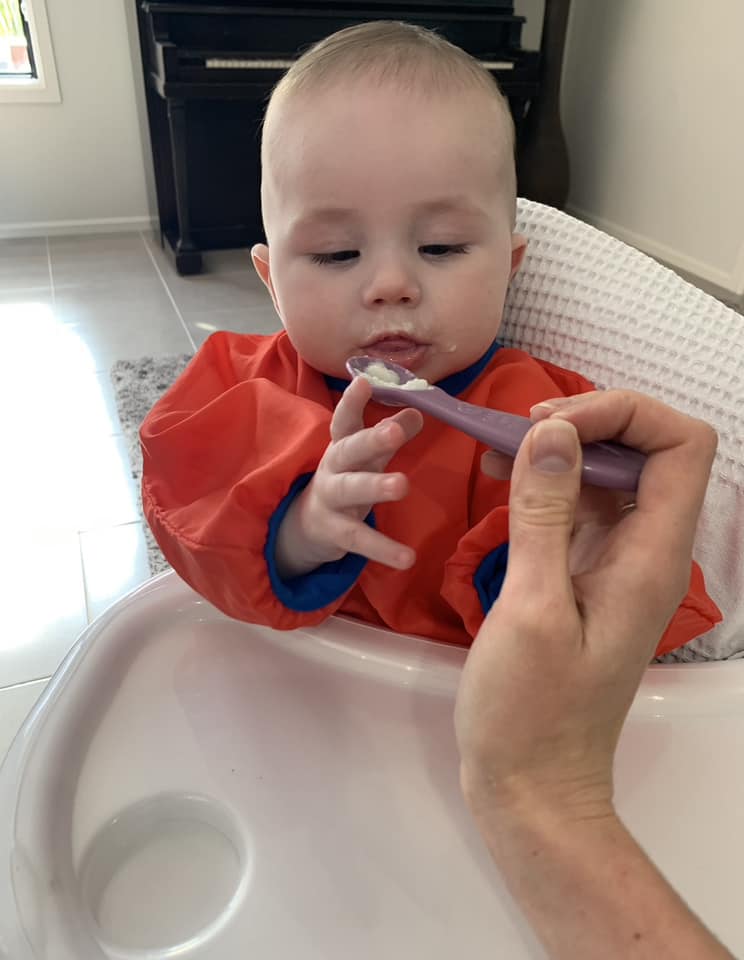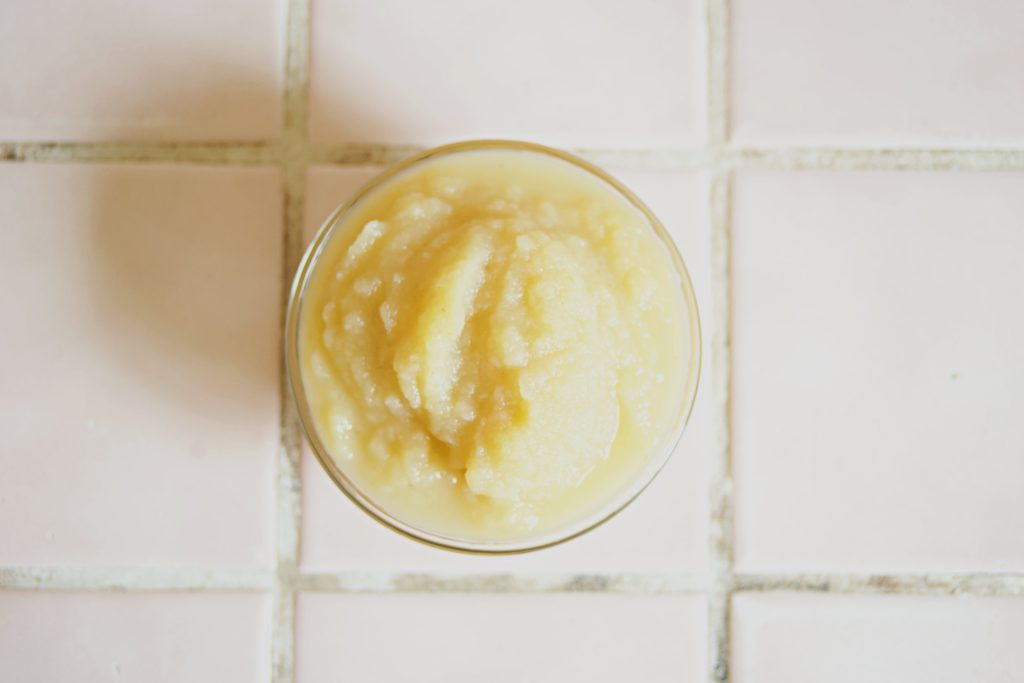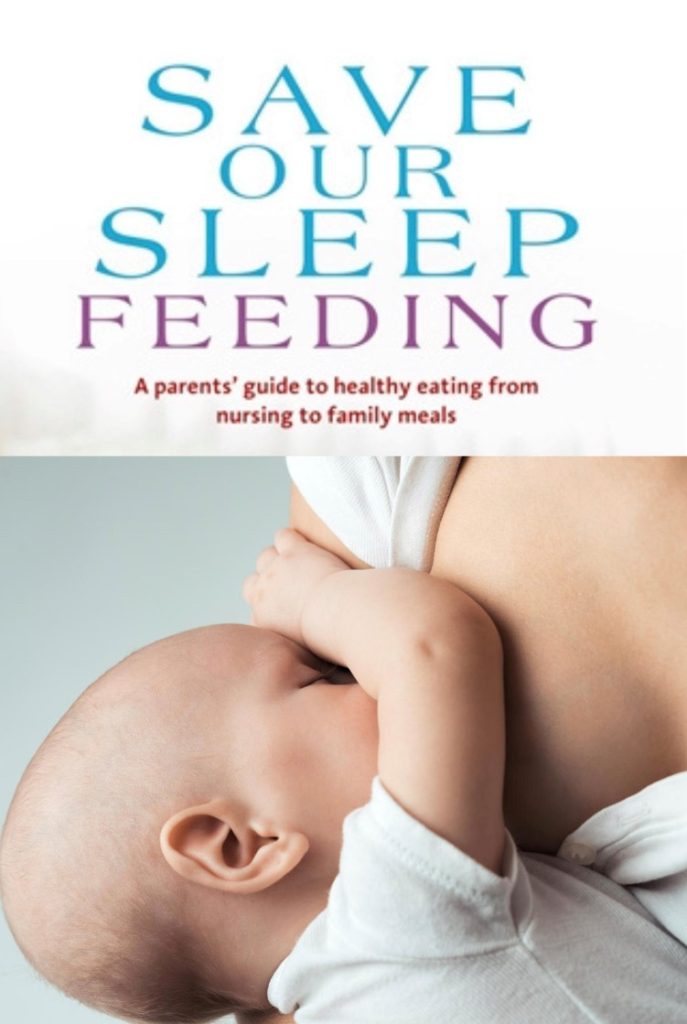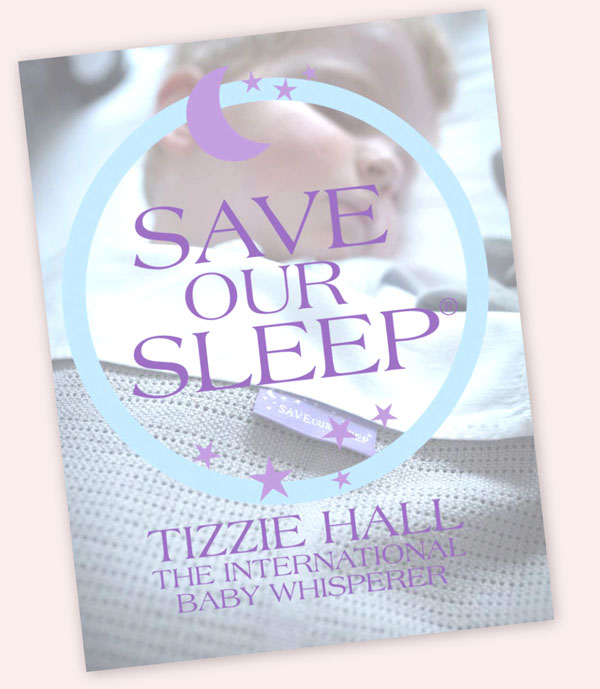Menu
I recently received some feedback from a mummy who was so glad she followed the Save Our Sleep feeding guide and started her little one on solids at 16 weeks.
This is exactly why we recommend you start early. It really does make such a huge difference!
One of our mummy’s in The Happy Baby Sleep clinic shared her story with the group
“Starting Solids Saved My Sleep!“
“As a full time mum and first time Save Our Sleep Baby I was hesitant to start solids at 16 weeks because of all the “new research” advising Mums to begin at 6 months. My son wasn’t holding his head up 100% and I fed him in the bouncer. We followed the Solids routine to a tee and introduced new foods. He’s now 22 weeks and he’s had all different types of foods as well as mixtures and his sleep as been remarkable. He’s always taken to the SOS routine well but I did start to have some early rising issues that have been combated by starting solids.
I just want to thank Tizzie for sticking to her guns and reassuring us that there is nothing wrong with starting solids at 4 months. All my friends were so surprised that I started and many tried to dissuade me (my SOS friends have much older kids) but I stuck to my guns and I have a child who has 2x 2 hours sleeps in the day and sleeps 7-7.
“If you’re hesitant about starting solids at 16 weeks, please don’t be. It will be the best thing you do!”
With my routines you give your baby milk before solids because for the first year of your baby’s life milk is the most important food. If you give solids first, your baby will be too full to drink her full milk feed. If you are not following my routines, I recommend you feed your baby solids an hour after her milk feed for breakfast and lunch and two hours after her milk feed for dinner. I have had parents following my routine swap this around for one reason or another and settling and sleeping problems are never far behind this change.
Some health professionals recommend parents give their baby solids first and then their milk feed an hour later, which would have the baby’s day starting at 7 am with a solids feed repeated four hours later throughout the day.
While your baby may remain settled and sleeping well on this feeding schedule at first, I have never found it to work long term without the baby developing some sleep and settling problems. There also comes a point where you need to move your baby’s mealtime to the same time as the family’s mealtime, which is more difficult with this feeding schedule. As with most things it is easier to start out the way you would like to continue for most of your baby’s childhood.
If you are following my routines and feeding your baby milk first followed by solids, you need to be aware that at your baby’s nine-month check your maternal and child health nurse might suggest you swap your baby’s milk and solids around. This advice is based on the fact that most parents are giving solids first followed by milk and is therefore aimed at encouraging parents to swap to milk first followed by solids to establish the baby on normal mealtimes. But you will not need to swap your baby’s milk and solids around if you are following my advice because your baby is already eating at common mealtimes.
Some parents delay introducing solids because they are concerned their baby will not drink enough milk once they get a taste for food. But I have found that all babies start to reduce their milk intake at around sixteen weeks, even if they don’t start solids at this time. It’s a stage they go through; it’s nothing to do with starting solids. This is why I recommend adding expressed breastmilk or formula to all your baby’s solids. When you are calculating your baby’s milk intake you will include the milk you add to her solids.
So for example if your baby is bottle-fed and five months old, you would calculate her milk intake as follows:
7 am milk feed: 180 ml formula
8 am breakfast: 80 ml formula mixed into her breakfast
11 am milk feed: 160 ml formula
12 noon lunch: 80 ml of formula in her savoury and 30 ml formula in her second course of lunch
3 pm milk feed: 180 ml
5.20 pm dinner: 80 ml formula in her savoury and 30 ml formula in her second course of lunch
6.20 pm milk feed: 180 ml
10.30 pm dreamfeed: 140 ml
So when you add all of her milk intake up, she has had 1,140 ml in the 24-hour period.

FIRST FOODS From 16 weeks:
When making fruit or vegetable purées, you will need to take the skin off all fruit and vegetables until your baby is six months old and also remove all stones, cores and seeds.
To make purée suitable for a baby of sixteen weeks until five months make sure you purée the food until it is ultra-smooth. You will only achieve this with a food processer or blender; you can’t make a smooth purée by pushing steamed food through a sieve. Allow the purée to cool before spooning into clean ice-cube trays. Cover the trays and place in the freezer.
Once the purée is frozen remove from the trays and place the cubes in a labelled and dated freezer bag. Return the cubes to the freezer. It is best to make up large batches of purée and freeze it, defrosting it when necessary.
All the recipes are best made by steaming the fruit or vegetables to retain the nutrients. But if you prefer to boil and simmer them, remember to use the water leftover when steaming or the water they were simmered in to help you get the smooth consistency when puréeing. The water will also contain some of the nutrients lost while cooking. I do not advise adding expressed breastmilk or formula into the purée at this stage.
When you have defrosted the purée and are ready to use it, I suggest you add baby rice cereal as well as expressed breastmilk or formula to the puréed vegetables and fruit at each meal. If you add expressed breastmilk or formula to the food without rice cereal, it becomes too runny. The infant rice cereal thickens the purée allowing you to add the expressed breastmilk or formula. This helps ensure your baby has an adequate milk intake after starting solids. Your baby will also benefit from the iron in the rice cereal.
To defrost cubes of purée take out enough for each serve and place in individual covered tubs or bowls in the fridge. Always cover them or they might absorb the smell of other items in the fridge and put your baby off eating his meal.
If you are going to serve the purée immediately, you can heat it straight from the freezer but only if it is 100 per cent fruit or vegetable with a little water. Heat the purée until piping hot then mix in cold expressed breastmilk or formula to cool it down.
Never reheat the purée. If your baby only eats a spoonful, do not be tempted to keep the leftovers for the next meal as this could give your baby food poisoning.

Carrot purée
Makes about fourteen cubes
Wash 1 kg baby dutch carrots under cold running water then peel and slice. Steam until cooked then purée and freeze.
Pumpkin purée
Makes about twelve cubes
Wash, peel and deseed 750 g pumpkin.* Steam until cooked then purée and freeze.
*Please note this is the pumpkin commonly used in Australia, not the large orange UK pumpkin you see at Halloween. UK pumpkin should not be given to a baby before eight months as it can cause an upset tummy.
Swede purée
Makes about sixteen cubes
Wash, peel and slice 700 g swede. Steam until cooked then purée and freeze.
Zucchini (courgette) purée
Makes about fourteen cubes
Wash 900 g zucchini, cut off the ends and slice. Steam until cooked then purée and freeze.
Potato and zucchini (courgette) purée
Makes about fourteen cubes
Wash, peel and chop 500 g potatoes.* Wash 450 g zucchini, cut off the ends and slice. Steam both vegetables together until cooked then purée and freeze.
*Potato does not freeze well by itself so I always suggest mixing it with zucchini.
Don’t forget you can add rice cereal to all the above puree recipes.
From five months you can start to mix up what you feed your baby and I’ve listed some suggestions for meals below. But remember, each baby will eat a different amount so you might need to double or triple the recipes.
Foods from 5 months and beyond:
• Carrot (two cubes); apple (one cube) and infant rice cereal mixed with expressed breastmilk or formula.
• Pear (two cubes); apple (one cube) and infant rice cereal mixed with expressed breastmilk or formula.
• Carrot (two cubes); potato and zucchini (one cube) and rice infant cereal mixed with expressed breastmilk or formula.
• Potato and zucchini (one cube); pumpkin (one cube); green beans (one cube) and infant rice cereal mixed with expressed breastmilk or formula.
• Potato and zucchini (one cube); sweet potato (two cubes) and infant rice cereal mixed with expressed breastmilk or formula.
Please remember that with all these combinations it is important you have introduced the fruits as recommended on page 147 of Save Our Sleep feeding guide before combining with other flavours. For example, you need to have introduced apple on its own for three days before you mix it with other foods. Only introduce one new flavour every three days.
At six months cooking becomes a little more adventurous because you can start to introduce casseroles and other meals. At this age you can also start to slowly introduce yoghurt. In my first book I advised yoghurt be introduced from seven months, but research released since that book was published now supports the introduction of yoghurt from an earlier age.
Start off with just a small teaspoon of yoghurt after lunch and increase the amount each day. Watch out for ongoing catnapping and night-waking, especially 40 minutes after bed, and early-rising which can indicate your baby is not quite ready for yoghurt.
You can also serve mixed with infant rice cereal and expressed breastmilk or formula for breakfast as the first course.
When you introduce solids, a new food or formula it is quite common for a baby to become a little unsettled and wake 40 minutes after you put her to bed at 7 pm. This seems to be normal and passes after a few days. It doesn’t mean the baby is intolerant to the new food you introduced, so you shouldn’t stop feeding it to her.
I always think of this as the baby’s body trying to tell us ‘I like that new food, I would like some more’, so they wake up and yell. You will need to comfort your baby if this happens as she might have hunger pains. Don’t offer her food or milk: stick to set mealtimes and this problem will pass.


Join our newsletter and receive a FREE download of the world famous Save Our Sleep Safe Bedding Guide delivered straight to your inbox!
PLUS you will also receive a thank you gift offer shortly after.
"*" indicates required fields